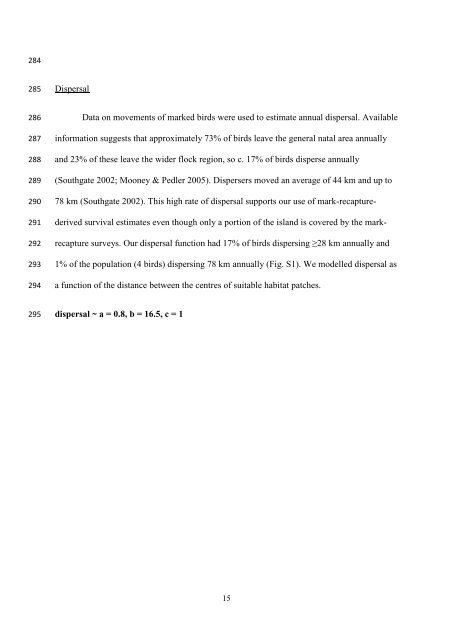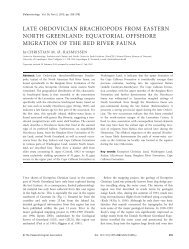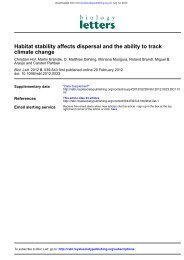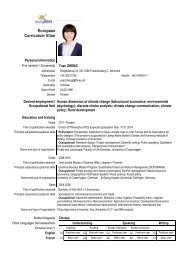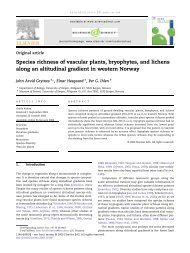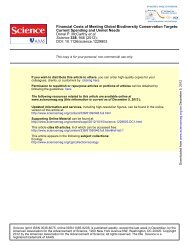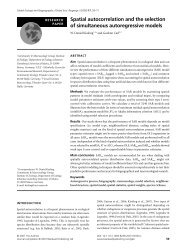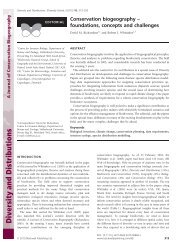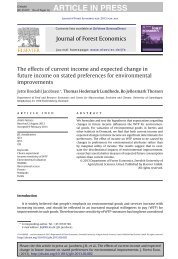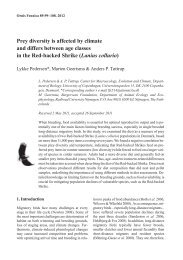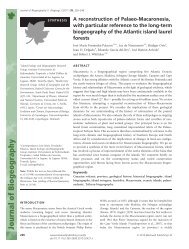Volume 49 ⢠Number 4 ⢠August 2012 - 192.38.112.111
Volume 49 ⢠Number 4 ⢠August 2012 - 192.38.112.111
Volume 49 ⢠Number 4 ⢠August 2012 - 192.38.112.111
You also want an ePaper? Increase the reach of your titles
YUMPU automatically turns print PDFs into web optimized ePapers that Google loves.
284<br />
285<br />
Dispersal<br />
286<br />
287<br />
288<br />
289<br />
290<br />
291<br />
292<br />
293<br />
294<br />
Data on movements of marked birds were used to estimate annual dispersal. Available<br />
information suggests that approximately 73% of birds leave the general natal area annually<br />
and 23% of these leave the wider flock region, so c. 17% of birds disperse annually<br />
(Southgate 2002; Mooney & Pedler 2005). Dispersers moved an average of 44 km and up to<br />
78 km (Southgate 2002). This high rate of dispersal supports our use of mark-recapturederived<br />
survival estimates even though only a portion of the island is covered by the markrecapture<br />
surveys. Our dispersal function had 17% of birds dispersing ≥28 km annually and<br />
1% of the population (4 birds) dispersing 78 km annually (Fig. S1). We modelled dispersal as<br />
a function of the distance between the centres of suitable habitat patches.<br />
295<br />
dispersal ~ a = 0.8, b = 16.5, c = 1<br />
15


